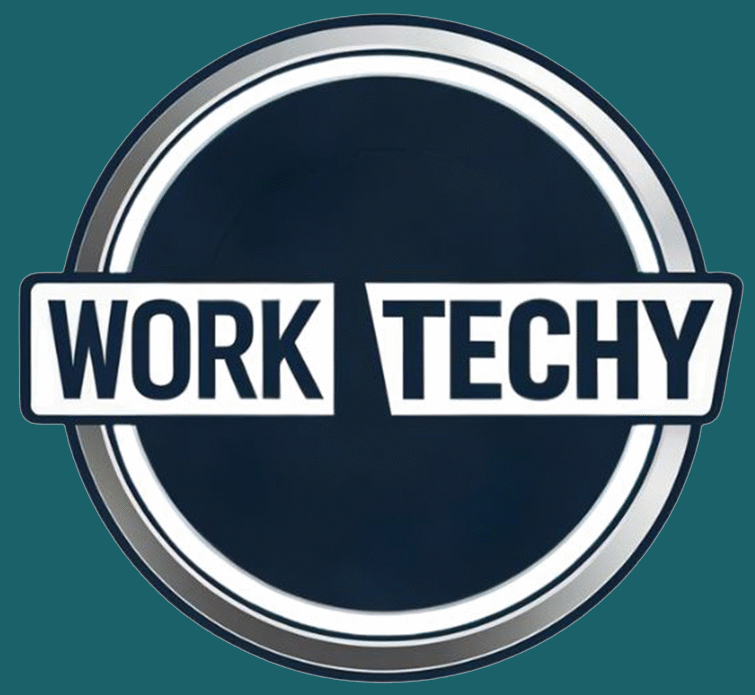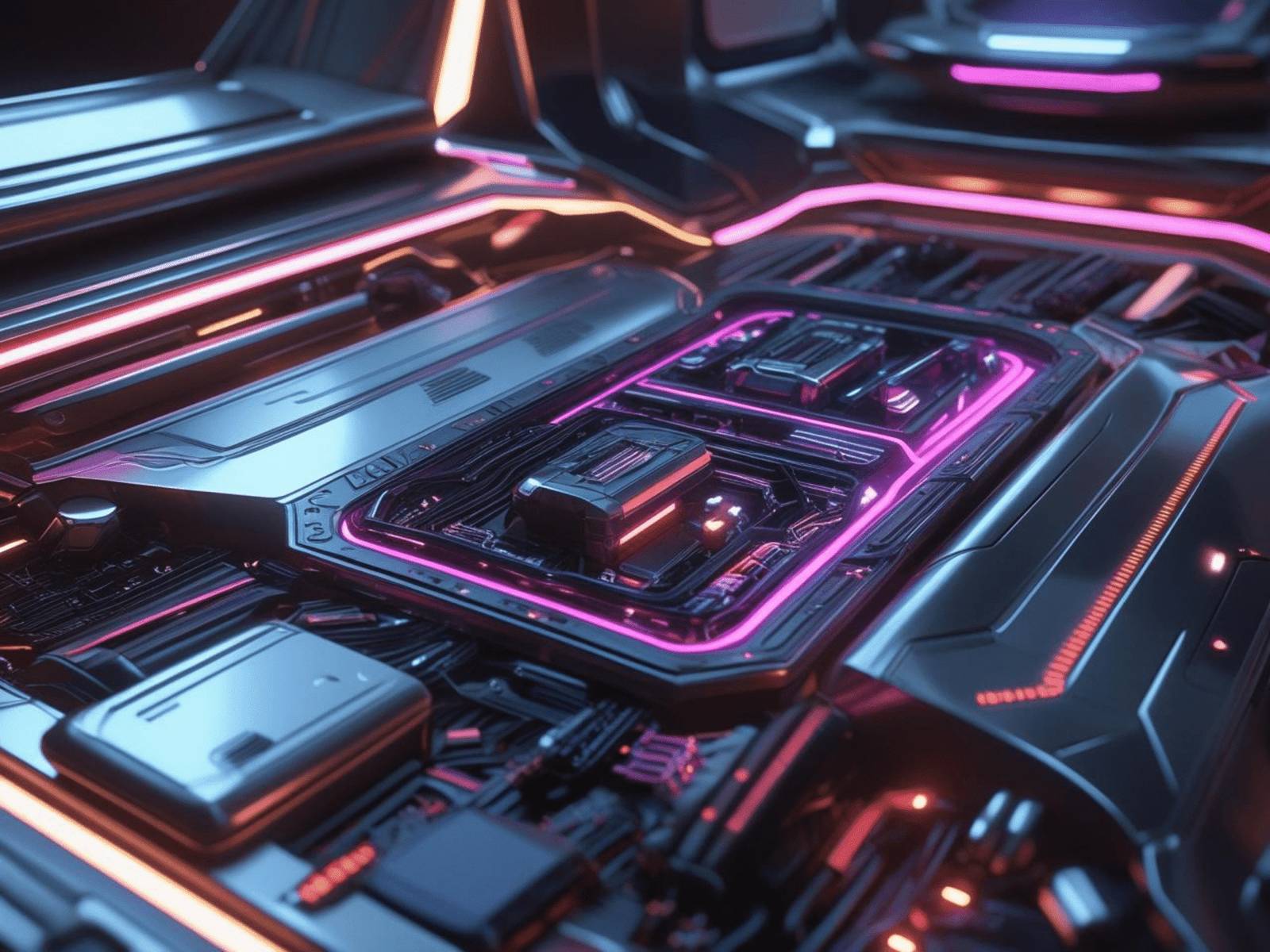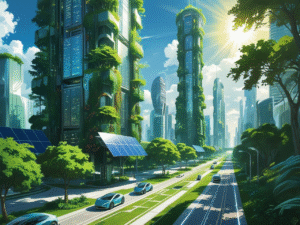Table of Contents
ToggleTechnology in Manufacturing: Revolutionizing the Industry
Manufacturing has always been at the heart of industrial growth, but in the modern era, technology has completely transformed the way products are designed, produced, and delivered. From automated machines to artificial intelligence (AI), the integration of advanced technologies is making manufacturing faster, more efficient, and more sustainable.
The Evolution of Manufacturing Technology
Traditional manufacturing relied heavily on manual labor and mechanical processes. Over time, industrial revolutions introduced machinery, assembly lines, and computer-based systems. Today, the industry is witnessing the Fourth Industrial Revolution (Industry 4.0), characterized by smart technologies that combine physical production with digital innovation.
Key Technologies Shaping Modern Manufacturing
Automation and Robotics
Automation reduces human error and improves precision. Robots are now widely used for repetitive tasks such as welding, painting, packaging, and assembly. Collaborative robots (cobots) even work alongside humans, enhancing productivity without replacing the human workforce.
Artificial Intelligence (AI) and Machine Learning
AI helps manufacturers predict equipment failures, optimize production lines, and analyze market demand. Machine learning algorithms can process vast amounts of data to enhance decision-making, reduce downtime, and improve efficiency.
3D Printing (Additive Manufacturing)
3D printing enables rapid prototyping and custom product design. It reduces waste, shortens production cycles, and allows manufacturers to create complex parts that were previously impossible with traditional methods.
Internet of Things (IoT)
IoT connects machines, sensors, and devices within a factory. Smart sensors track real-time data such as temperature, pressure, and equipment performance, enabling predictive maintenance and reducing production delays.
Augmented and Virtual Reality (AR/VR)
AR and VR are used in product design, employee training, and quality inspections. For example, AR glasses can guide workers during assembly, reducing errors and improving safety.
Big Data and Analytics
Manufacturers now collect and analyze huge volumes of data to gain insights into production trends, customer needs, and supply chain operations. This data-driven approach improves decision-making and cost efficiency.
Sustainable and Green Technologies
Modern manufacturing also focuses on eco-friendly solutions, including renewable energy, energy-efficient machinery, and waste reduction practices to minimize environmental impact.
Benefits of Technology in Manufacturing
Increased Efficiency – Faster production with fewer errors.
Cost Reduction – Optimized processes and reduced waste lower overall costs.
Higher Quality Products – Precision technologies ensure consistent product quality.
Flexibility and Customization – Technologies like 3D printing allow personalized products.
Safety – Automated systems reduce the risks of hazardous tasks for workers.
Challenges Ahead
Despite its benefits, adopting new technologies comes with challenges such as high implementation costs, cybersecurity risks, and the need to upskill the workforce. Small and medium-sized enterprises (SMEs) often face more difficulty in adopting advanced systems due to budget limitations.
Conclusion
Technology in manufacturing is not just about making production faster—it is about creating a smarter, safer, and more sustainable industry. As Industry 4.0 continues to evolve, manufacturers who embrace innovation will remain competitive, while those who resist change risk falling behind. The future of manufacturing lies in the seamless integration of human creativity and technological advancements.
Internet of Things (IoT) in Smart Homes
The Internet of Things (IoT) has transformed the way we live, work, and interact with technology. Among its many applications, one of the most impactful areas is the concept of smart homes. A smart home integrates IoT-enabled devices and systems to create a connected environment where daily tasks are automated, energy consumption is optimized, and convenience is enhanced.
What is IoT in Smart Homes?
IoT in smart homes refers to the use of interconnected devices that communicate with each other through the internet. These devices, equipped with sensors and actuators, can collect data, analyze it, and make decisions with little or no human intervention. From smart lights to intelligent security systems, IoT is making homes more efficient, safe, and user-friendly.
Key Applications of IoT in Smart Homes
Smart Lighting Systems
IoT-enabled lighting can adjust brightness and color based on user preferences or natural light levels. Motion sensors can turn lights on when someone enters a room and off when it is unoccupied, reducing energy waste.
Home Security
Smart security cameras, door locks, and motion detectors allow homeowners to monitor their houses remotely. Real-time alerts on smartphones ensure immediate action if suspicious activity is detected.
Smart Thermostats and Climate Control
IoT-based thermostats learn user habits and adjust temperature settings accordingly. This not only improves comfort but also reduces energy bills by optimizing heating and cooling.
Voice-Activated Assistants
Devices like Amazon Alexa, Google Assistant, and Apple’s Siri act as central hubs, allowing users to control multiple smart appliances with voice commands.
Smart Appliances
Everyday household devices such as refrigerators, washing machines, and ovens are now IoT-enabled. For example, a smart refrigerator can notify you when groceries are running low or suggest recipes based on available ingredients.
Energy Management
IoT helps track electricity usage across devices and suggests ways to save energy. Solar power systems integrated with IoT can even feed excess power back to the grid.
Benefits of IoT in Smart Homes
Convenience : Automates routine tasks, saving time and effort.
Energy Efficiency : Reduces unnecessary power consumption.
Safety and Security : Provides real-time monitoring and quick alerts.
Cost Savings : Lowers utility bills through optimized usage.
Accessibility : Assists elderly and disabled individuals with voice and remote controls.
Challenges and Concerns
While IoT in smart homes offers many advantages, it also raises some concerns:
Data Privacy and Security : With more devices connected, the risk of cyberattacks and data theft increases.
High Initial Costs : Smart devices and installations can be expensive.
Interoperability Issues : Devices from different brands may not always integrate smoothly.
Dependence on Internet : A stable internet connection is crucial for IoT to function effectively.
Future of Smart Homes with IoT
The future of smart homes looks promising with the advancement of Artificial Intelligence (AI) and 5G technology. AI will make devices smarter by learning user behavior patterns, while 5G will ensure faster and more reliable connectivity. Soon, smart homes may become standard, offering sustainable living through efficient energy use and personalized automation.
Conclusion
The Internet of Things is revolutionizing smart homes by bringing together convenience, efficiency, and security. As technology advances, the vision of fully automated and eco-friendly living spaces is becoming a reality. While challenges exist, the benefits far outweigh them, making IoT a cornerstone of modern smart living.
Cryptocurrency: The Future of Digital Finance
In the last decade, one of the most revolutionary innovations in the financial world has been the rise of cryptocurrency. From being a niche concept known only to technology enthusiasts, it has now become a global phenomenon, reshaping how people view money, investment, and transactions.
What is Cryptocurrency?
Cryptocurrency is a type of digital or virtual currency that uses cryptography for security. Unlike traditional money issued by governments and banks, cryptocurrencies operate on decentralized networks based on blockchain technology. A blockchain is a distributed ledger that records transactions in a secure, transparent, and tamper-proof way.
The first cryptocurrency, Bitcoin, was introduced in 2009 by an anonymous person (or group) under the pseudonym Satoshi Nakamoto. Since then, thousands of cryptocurrencies such as Ethereum, Ripple, Litecoin, and Dogecoin have emerged.
Key Features of Cryptocurrency
Decentralization – No central authority like a bank or government controls it.
Security – Advanced cryptographic techniques protect transactions from fraud.
Transparency – All transactions are recorded on public blockchains, accessible to anyone.
Global Access – Cryptocurrencies can be used across borders without traditional banking restrictions.
Limited Supply – Many cryptocurrencies have a fixed supply (e.g., Bitcoin has a maximum of 21 million coins).
Benefits of Cryptocurrency
Financial Inclusion : Cryptocurrencies allow people without access to traditional banking to store and transfer value.
Faster Transactions : Unlike bank transfers that may take days, crypto transactions are often completed in minutes.
Lower Costs : International money transfers through banks can be expensive, but cryptocurrencies reduce fees.
Investment Opportunities : Many investors see cryptocurrencies as a new asset class, with the potential for high returns.
Challenges and Risks
While cryptocurrency offers many advantages, it also faces significant challenges:
Volatility : Prices can rise or fall dramatically in short periods.
Regulation : Governments around the world are still figuring out how to regulate digital currencies.
Security Concerns: While blockchain is secure, exchanges and wallets have been targets of hacking.
Scams and Frauds : Lack of regulation has led to scams, fake coins, and fraudulent investment schemes.
The Future of Cryptocurrency
The future of cryptocurrency is both exciting and uncertain. Some experts believe it will revolutionize the financial system, replacing traditional currencies and making banking more democratic. Others remain skeptical due to its volatility and regulatory challenges.
However, with increasing adoption by businesses, financial institutions, and even governments, it is clear that cryptocurrencies are here to stay. Projects like Central Bank Digital Currencies (CBDCs) are also inspired by cryptocurrency technology, showing how digital finance is evolving rapidly.
Conclusion
Cryptocurrency represents a significant shift in how we perceive and use money. While it comes with risks, it also brings opportunities for innovation, inclusion, and growth. As technology continues to advance, cryptocurrency could play a central role in shaping the future of the global economy.
Robotics and Automation in Industry
In today’s rapidly evolving technological landscape, robotics and automation are playing a transformative role in industries across the globe. These technologies are revolutionizing the way businesses operate, enhancing productivity, reducing costs, and improving efficiency. From manufacturing to healthcare, logistics to agriculture, robotics and automation have become essential drivers of industrial progress.
What Are Robotics and Automation?
Robotics refers to the design, creation, and use of machines—robots—that can perform tasks traditionally carried out by humans. Automation, on the other hand, involves using technology and control systems to operate machinery and processes with minimal human intervention. When combined, robotics and automation provide industries with intelligent systems capable of performing repetitive, complex, and even hazardous tasks with high precision.
Applications in Industry
Manufacturing – Robotics has become central to assembly lines, welding, painting, and packaging. Automated robots improve speed, accuracy, and consistency, leading to higher-quality products.
Logistics and Warehousing – Automated guided vehicles (AGVs) and robotic arms streamline inventory management, order picking, and goods transportation, reducing human error.
Agriculture – Automated machinery and robotic systems help in harvesting crops, monitoring soil health, and reducing labor costs.
Automotive Industry – From car assembly to quality testing, robotics ensures mass production while maintaining safety and precision.
Benefits of Robotics and Automation
Increased Productivity – Robots work continuously without fatigue, boosting output.
Cost Reduction – Automation lowers labor costs and minimizes waste through precise operations.
Enhanced Safety – Robots can perform dangerous tasks in environments unsafe for humans.
Improved Quality – Automation ensures consistency, reducing human errors in production.
Scalability – Industries can quickly scale operations with automated systems.
Challenges and Concerns
Despite the benefits, robotics and automation present challenges such as:
High Initial Costs – Investment in robotic systems and infrastructure can be expensive.
Job Displacement – Automation may reduce the need for certain types of human labor.
Technical Issues – Dependence on machines requires regular maintenance and skilled operators.
Cybersecurity Risks – Automated systems connected to networks are vulnerable to cyber threats.
Future of Robotics and Automation in Industry
The future promises even greater integration of robotics with artificial intelligence (AI), machine learning, and the Internet of Things (IoT). Smart factories, often referred to as “Industry 4.0,” will leverage these technologies to create fully connected, self-optimizing production systems. Collaborative robots (cobots) are expected to work side by side with humans, combining efficiency with human creativity and decision-making.
Conclusion
Robotics and automation are no longer optional in modern industry—they are a necessity. While they bring challenges, their benefits far outweigh the drawbacks. By embracing these technologies responsibly, industries can ensure sustainable growth, competitiveness, and innovation in the years to come.



